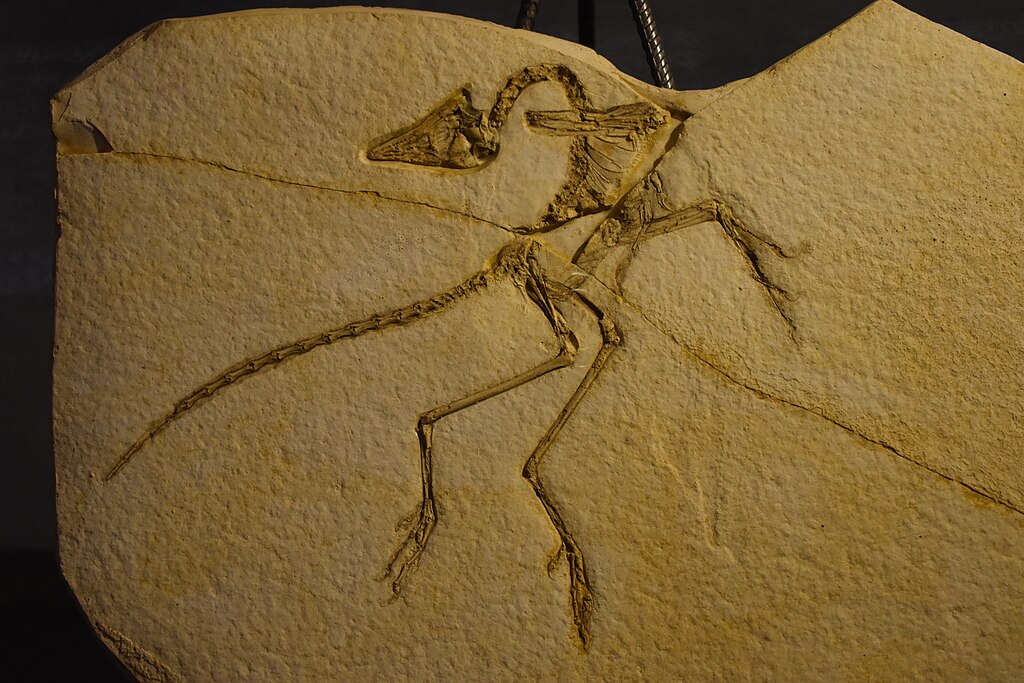Nature continues to surprise scientists with unexpected adaptations that challenge our understanding of evolutionary biology. Recently, researchers have discovered a remarkable defense mechanism involving an animal’s tail that has completely upended previous theories about predator-prey dynamics. This fascinating adaptation demonstrates yet again how evolution crafts ingenious solutions to survival challenges, often in ways that seem counterintuitive to human observers. The discovery not only reshapes our understanding of animal defense strategies but also opens new avenues for biomimetic research with potential applications in various fields from robotics to protective equipment design.
The Unexpected Discovery in the Animal Kingdom

Scientists studying the blue-tailed skink (Plestiodon fasciatus) made a startling observation that contradicted decades of established theory about reptilian defense mechanisms. While most lizards’ tails are known to detach as a distraction technique, allowing the animal to escape while predators focus on the still-wriggling appendage, the blue-tailed skink employs its brilliantly colored tail in an entirely different manner. Rather than serving merely as a disposable decoy, the vivid blue tail actually contains compounds that make predators temporarily ill upon consumption. This discovery came about when researchers noticed that predators who had attempted to eat juvenile skinks would avoid not just that individual in future encounters, but would actively avoid all blue-tailed individuals, suggesting a learned aversion based on negative physiological experience.
The Science Behind the Blue Pigmentation

The eye-catching blue coloration of the juvenile skink’s tail isn’t merely for show—it serves a crucial biological purpose. Biochemical analysis revealed that the blue pigment contains specialized alkaloid compounds that trigger nausea and temporary paralysis of the jaw muscles when ingested by predators. Unlike traditional aposematic (warning) coloration that relies on predators learning to associate bright colors with unpleasantness through experience, these skinks seem to have developed a two-pronged approach. The distinctive blue serves as both an attractive target to draw attacks away from vital body parts and as a chemical defense mechanism. This dual functionality represents an evolutionary innovation previously unrecognized in reptiles, combining distraction techniques with chemical warfare in a single adaptation.
Evolutionary Advantages of the Toxic Tail

The evolution of this specialized tail defense provides multiple survival advantages for the blue-tailed skink. First, it increases individual survival chances since predators learn to avoid these lizards after just one unpleasant encounter. Second, it creates a population-wide protective effect through predator learning, meaning that even skinks that haven’t encountered a particular predator benefit from the negative experiences of others. Third, unlike complete tail autotomy (detachment), this defense doesn’t require the energy-intensive process of regrowing an entirely new tail. While juvenile skinks can still drop their tails if necessary, the primary defense mechanism allows them to keep their appendage intact in many encounters, conserving the substantial energy that would otherwise be required for regeneration. This efficiency likely provides a significant advantage in terms of growth rates and overall fitness.
Age-Related Changes in Defense Strategy

Intriguingly, the blue tail coloration and its associated toxic properties are primarily features of juvenile skinks, with adults displaying a more uniform brown coloration. This age-specific defense mechanism appears to be an adaptation to the heightened vulnerability of young skinks, which face greater predation pressure due to their smaller size and inexperience. As the skinks mature and grow larger, they gradually transition to relying more on speed, strength, and camouflage for protection. Researchers have documented that the chemical compounds in the tail decrease in concentration as the animal ages, suggesting a metabolic shift away from producing these defensive toxins. This strategic reallocation of resources allows mature skinks to invest more energy in reproduction and territorial defense rather than maintaining an energetically costly chemical defense system.
Comparisons to Other Animal Defense Mechanisms

The blue-tailed skink’s defense strategy represents a fascinating middle ground between two common defense mechanisms found elsewhere in the animal kingdom. On one hand, it shares characteristics with autotomizing animals like many other lizards that sacrifice a body part to escape predation. On the other hand, it has elements in common with poisonous amphibians like poison dart frogs that use bright coloration to warn predators of their toxicity. What makes the skink’s approach unique is the combination of these strategies—focusing predator attention on a specific body part that can deliver a chemical defense while still remaining attached to the body. This strategic integration of multiple defense mechanisms demonstrates how evolution can produce sophisticated solutions that maximize survival benefits while minimizing costs to the organism.
The Geographic Distribution and Habitat Influence

The blue-tailed skink’s specialized defense mechanism shows interesting variations across its geographic range, which spans much of eastern North America. Populations in regions with higher predator diversity tend to display more vibrant blue tails and higher concentrations of the defensive compounds. This geographic variation suggests ongoing evolutionary pressures are fine-tuning this adaptation based on local predation threats. Habitat type also appears to influence the expression of this trait, with skinks living in open areas with less cover developing more intense blue coloration compared to those in densely vegetated habitats. These patterns indicate that the defense mechanism isn’t static but rather represents a dynamic adaptation that responds to environmental pressures and ecological contexts, allowing populations to optimize their defense strategies for specific conditions.
Predator Learning and Memory

One of the most fascinating aspects of this defense mechanism is how it exploits predator cognition and learning abilities. Research shows that predators who experience the unpleasant effects of consuming a blue-tailed skink develop a strong and persistent aversion not just to the individual skink they attacked but to any skink displaying the distinctive blue tail. This learned avoidance can last for months or even years in some predator species, creating a long-term protective effect for the skink population. Experimental studies using model predators have demonstrated that even a single negative experience can create strong avoidance behaviors, with predators showing heightened stress responses merely upon viewing the distinctive blue coloration. This relationship highlights the complex cognitive interplay between predator and prey, where prey species evolve traits specifically designed to exploit predator learning and memory systems.
Molecular Mechanisms Behind the Toxins

The biochemical composition of the blue-tailed skink’s defensive compounds has revealed surprising complexity at the molecular level. Unlike many reptilian toxins that are protein-based, the skink’s defensive compounds are primarily alkaloid-based molecules that target specific neural receptors in predators. These compounds appear to be synthesized through a specialized metabolic pathway that converts common amino acids into complex alkaloid structures. Gene expression studies show that cells in the tail skin activate specific enzymatic pathways not found in other body tissues, suggesting a highly specialized adaptation. Interestingly, these compounds show structural similarities to certain plant alkaloids, raising intriguing questions about convergent evolution or possibly even horizontal gene transfer from dietary sources over evolutionary time. The precise mechanism of toxin production continues to be an active area of research with potential applications in pharmacology.
Implications for Conservation Efforts

Understanding the blue-tailed skink’s unique defense mechanism has important implications for conservation strategies. As habitat fragmentation increases and introduces new predator-prey dynamics, knowledge of these specialized adaptations helps conservationists predict how populations might respond to changing conditions. For instance, areas with increased predator diversity might favor juvenile skinks with more potent chemical defenses, potentially creating isolated populations with distinct defensive traits. Climate change also poses potential challenges, as temperature fluctuations can affect the metabolic pathways responsible for producing the defensive compounds. Conservation efforts now include monitoring not just population numbers but also the efficacy of defense mechanisms as potential early indicators of ecological stress. By understanding these complex adaptive traits, conservation biologists can develop more nuanced and effective protection strategies for these remarkable reptiles.
Biomimetic Applications Inspired by This Discovery

The unique defense mechanism of the blue-tailed skink has captured the attention of biomimetic researchers looking to develop new technologies inspired by natural adaptations. Engineers are particularly interested in the dual-function nature of the skink’s tail—both attracting attention and delivering a defensive response. This principle has inspired designs for new types of protective equipment that could direct attacks to reinforced areas while simultaneously deploying a deterrent. Materials scientists are exploring how the chemical structure of the skink’s defensive compounds might inform the development of non-lethal deterrents or temporary incapacitating agents. Additionally, the color-changing properties observed during the skink’s maturation have prompted research into dynamic camouflage technologies that could adapt to different threat scenarios. These biomimetic applications demonstrate how fundamental biological research often leads to unexpected technological innovations with broad practical applications.
Historical Misinterpretations of This Defense Mechanism

For decades, scientists misinterpreted the function of the blue-tailed skink’s distinctive coloration, providing a fascinating case study in how scientific understanding evolves. Early naturalists in the 18th and 19th centuries assumed the bright blue tail was primarily a sexual display feature, despite its prominence in juveniles rather than reproductive adults. Later, when tail autotomy became better understood in the early 20th century, researchers assumed the blue merely served to direct predator attention to a dispensable body part. It wasn’t until sophisticated biochemical analysis became available in recent decades that the defensive chemical properties were discovered. This historical progression demonstrates how scientific understanding is continually refined as new methodologies become available and as researchers challenge existing paradigms. The case of the blue-tailed skink serves as a reminder that even seemingly well-understood biological features may harbor additional functions and complexities awaiting discovery.
Future Research Directions and Remaining Questions

While significant progress has been made in understanding the blue-tailed skink’s defense mechanism, numerous questions remain for future research. Scientists are particularly interested in the genetic basis for this adaptation and how the trait is inherited across generations. Comparative studies with closely related species may reveal the evolutionary history of this adaptation and whether it represents a novel innovation or modification of an ancestral trait. Researchers are also investigating potential costs associated with producing these defensive compounds and how these trade-offs influence other aspects of skink biology. Another promising avenue involves exploring how predator communities might evolve counter-adaptations to overcome this defense mechanism, potentially leading to evolutionary arms races. As genetic sequencing technology advances, identifying the specific genes responsible for both the pigmentation and toxin production could provide further insights into the molecular mechanisms underlying this remarkable adaptation.
Conclusion: Redefining Our Understanding of Defense Mechanisms

The discovery of the blue-tailed skink’s unique chemical defense strategy challenges long-held assumptions about reptilian defense mechanisms and highlights the incredible diversity of evolutionary adaptations. By combining attention-directing coloration with chemical deterrents, these skinks have developed a sophisticated system that maximizes survival while minimizing energy expenditure. This finding reminds us that nature often defies our expectations, developing solutions that may seem counterintuitive yet prove remarkably effective. As research continues to uncover the molecular, ecological, and evolutionary dimensions of this adaptation, we gain not only a deeper appreciation for the complexity of natural systems but also potential inspiration for human innovations. The blue-tailed skink stands as a testament to nature’s ingenuity and the continuing importance of basic biological research in expanding our understanding of the natural world.




